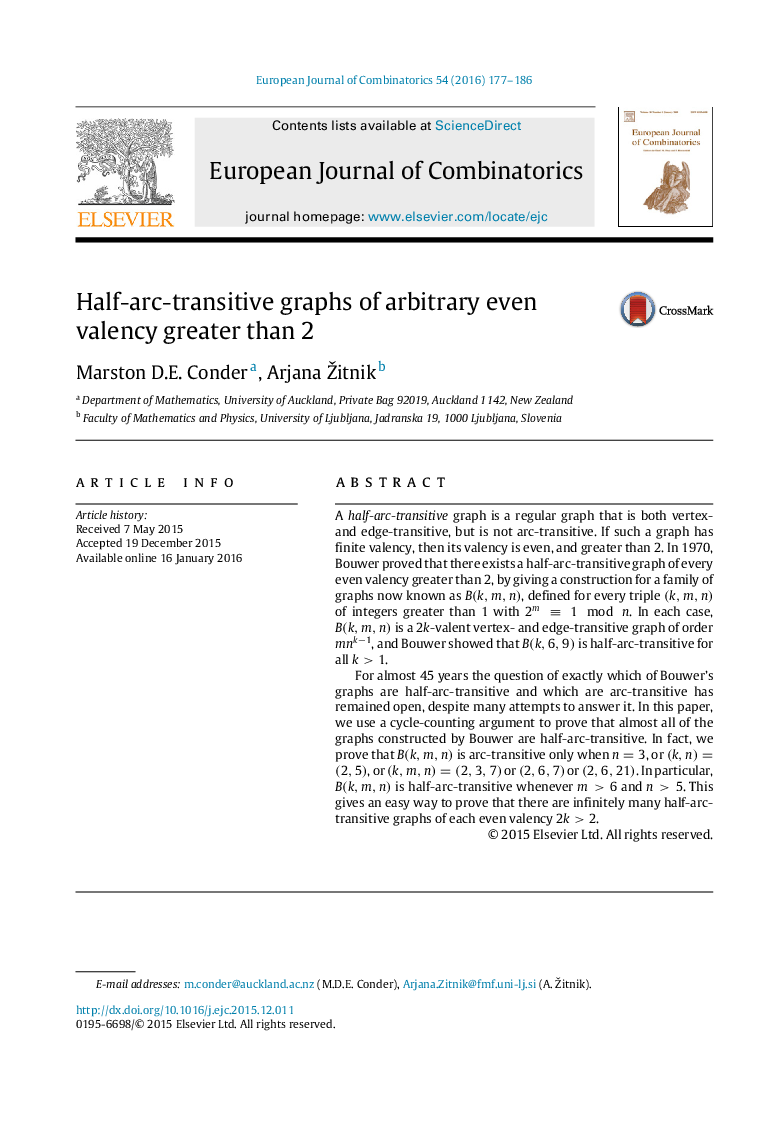| Article ID | Journal | Published Year | Pages | File Type |
|---|---|---|---|---|
| 4653306 | European Journal of Combinatorics | 2016 | 10 Pages |
A half-arc-transitive graph is a regular graph that is both vertex- and edge-transitive, but is not arc-transitive. If such a graph has finite valency, then its valency is even, and greater than 22. In 1970, Bouwer proved that there exists a half-arc-transitive graph of every even valency greater than 2, by giving a construction for a family of graphs now known as B(k,m,n)B(k,m,n), defined for every triple (k,m,n)(k,m,n) of integers greater than 11 with 2m≡1modn2m≡1modn. In each case, B(k,m,n)B(k,m,n) is a 2k2k-valent vertex- and edge-transitive graph of order mnk−1mnk−1, and Bouwer showed that B(k,6,9)B(k,6,9) is half-arc-transitive for all k>1k>1.For almost 45 years the question of exactly which of Bouwer’s graphs are half-arc-transitive and which are arc-transitive has remained open, despite many attempts to answer it. In this paper, we use a cycle-counting argument to prove that almost all of the graphs constructed by Bouwer are half-arc-transitive. In fact, we prove that B(k,m,n)B(k,m,n) is arc-transitive only when n=3n=3, or (k,n)=(2,5)(k,n)=(2,5), or (k,m,n)=(2,3,7)(k,m,n)=(2,3,7) or (2,6,7)(2,6,7) or (2,6,21)(2,6,21). In particular, B(k,m,n)B(k,m,n) is half-arc-transitive whenever m>6m>6 and n>5n>5. This gives an easy way to prove that there are infinitely many half-arc-transitive graphs of each even valency 2k>22k>2.
